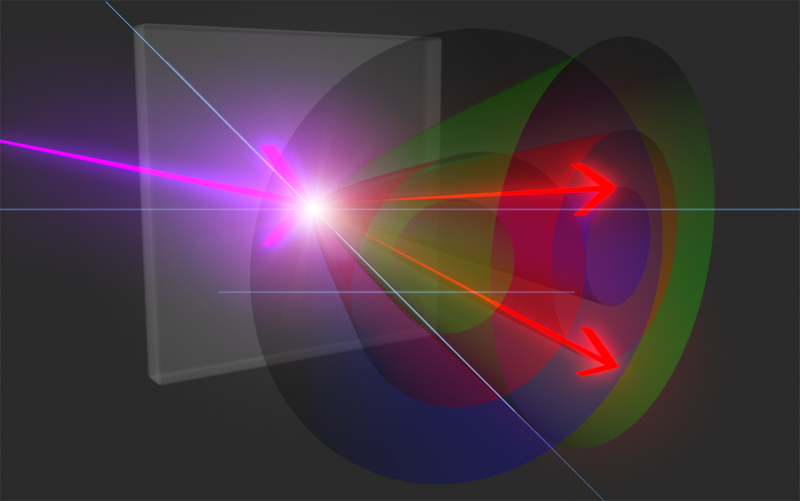Foiling a ‘malicious manipulator’ of a quantum cryptographic message
February 22, 2012

The creation of entangled photon pairs by a process known as down-conversion. Entangled photon pairs are used in some schemes for quantum cryptography. (Credit: Centre for Quantum Technologies at the National University of Singapore)
Quantum cryptography — the ultimate secret message service — can now counter even the ultimate paranoid scenario: when the equipment or even the operator is in the control of a malicious power.
Until now, quantum cryptography protocols have always assumed that an adversary would not have access to information about any choices that are made during the process of encryption.
“We are challenging this assumption,” says Artur Ekert, Director of the Centre for Quantum Technologies (CQT) at the National University of Singapore (NUS) and Professor at the University of Oxford.
Quantum cryptography provides a way for two parties to share a secret key — a random sequence of 1s and 0s — that can be used to scramble and decode a message. It also allows for detecting eavesdropping attempts. When the key is transmitted, using photons, say, any interception of the signal changes it in a way the legitimate parties can detect. Insecure keys can then be discarded.
But a “malicious manipulator” might have the ability to control the setup or influence the communicating parties’ choice of settings in transmitting the key. So Ekert and colleagues have worked out how to calculate, given the degree of manipulation, how much genuine randomness remains in the key. This offers a measure of how much of the key has been left untouched and will, in turn, determine how much of the key can be guaranteed secret.
The breakthrough builds on two recent twists that have given quantum cryptography a powerful boost against eavesdroppers:
- Researchers showed that one can design quantum cryptography setups such that devices of dubious provenance — such as those purchased from an untrusted supplier, or even an enemy — can still, with some care, be safely used for secure communication. This remarkable feat is known as “device independent cryptography” and is on the edge of being technologically feasible.
- Device-independent schemes transcend the details of the underlying physics. Even if physicists discover new laws, such as a theory of everything that replaces quantum mechanics, these schemes will continue to be secure, physicists believe.
Ref.: Artur Ekert, A Powerful Twist on Quantum Cryptography, AAAS Annual Meeting, 2012; [link]
Ref.: Artur Ekert, Less reality, more security [link]
Ref.: Dax Enshan Koh et al., The e ects of reduced “free will” on Bell-based randomness expansion, arxiv.org/abs/1202.3571